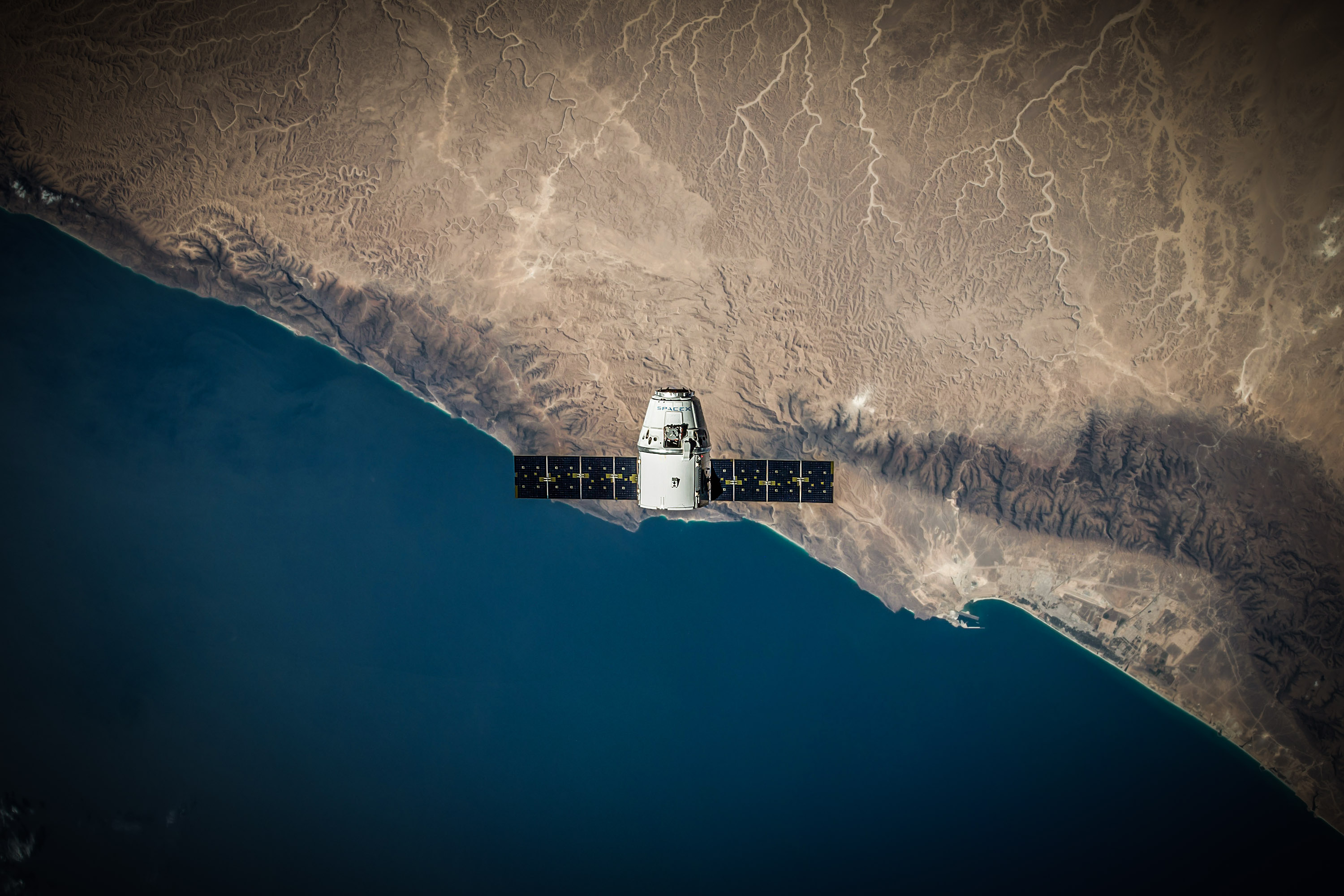
If you want to know why I remain so optimistic for our future even though the national political, geopolitical, and economic news is so depressing, check out the space news I’ve noticed in the last week. As Behind the Black often says, the competition is heating up.
One bit of not-so-great news. From Space.com: Video Shows SpaceX Falcon 9 Rocket Land on Droneship, Then Fall Over and Explode. The video is here. SpaceX’s Falcon 9 landed almost dead center on the drone floating 200 miles south of Vandenberg. The engine cut off which means it was landed successfully. Then one of the legs gave out, the rocket tipped over, then exploded. Preliminary guess is that something (a lockout collet?) iced over while on the launch pad.
1/14 – Behind the Black – Orbital ATK and SpaceX win Air Force contracts – ULA does not have engines for its rockets and thus must rely on Russian engines to get our military launches into space. Orbital ATK and SpaceX both have contracts to develop new engines.
The obvious story line here that gives me such encouragement is two new-on-the-scene, privately owned space companies have been called in to help the mega-contractor ULA get out of its mess.
Another big contract:
1/14 – Behind the Black – SpaceX, Orbital ATK, and Sierra Nevada awarded contracts to ISS – NASA has given contracts to all three companies for cargo runs to ISS. This is the second round of contracts for carrying cargo.
Those contracts will help keep all three companies in the game.
Two governments are getting into the game. Will mention the Russians today and the Chinese in a few days.
1/11 – Behind the Black – Russians to develop Falcon 9-like rocket – The Russian government has approved plans to develop a new rocket called Fenix, or Phoenix, which is comparable to a Falcon 9. The powerful first stage will be modular so additional boosters can be strapped to the main rocket. The concept is initially for it to be an expendable booster but eventually become reusable.
The plan is to have Fenix operational by 2025. That means it will take them about a decade, making the assumption they hit the timeline. In an authoritarian, non-free-market economy that is a massively humongous if.
In contrast, it took SpaceX five years to launch their Falcon 9. (I’m chuckling – in ten years the Russians are hoping they will accomplish what SpaceX has already accomplished in five.)
Article points out the serious challenge for the Russian Fenix/Phoenix is that the 2025 version will be competitive with the 2016 version of SpaceX’s Falcon Heavy. There’s no telling what state-of-the-art lift vehicles will look like by 2025.
Nevertheless, competition is good.
And then there is one non-player, sitting on the bench.
1/12 – Behind the Black – SLS still has no mission – NASA’s newest heavy lift vehicle called Space Launch System, or SLS, is still in development. It has funding through a test in 2018, but according to the interpretation in this summary, it has no mission.
I read the referred article but didn’t get a lot more knowledge than the summary.
Part of the problem: Article says the cost per launch is somewhere between $3B and $14B each. Range is based on how to account for the cost of each launch. Basically, that is an allocation issue. Do you take ten billion dollars out of ongoing overhead and allocate it to a launch or is that just the administrative cost of keeping NASA alive and functioning?
In contrast a Falcon Heavy launch is expected to cost between $0.1B and $0.15B. Lift capacity of Falcon Heavy is two-thirds the payload of SLS.
Let’s see….Costs somewhere between 20 ($3B/$0.15B) or 140 ($14B/$0.1B) times more to get 50% more into orbit. That means the launch cost per pound is somewhere between 13 and 90 times higher with the SLS than a Falcon Heavy.
As BtB points out, even the most slow-witted Congressmen can tell that is a bad deal. (No matter where you stand on the political spectrum, I am confident you would agree there is serious competition in D.C. for the Most Slow Witted trophy.)
Looks like NASA and their SLS is not in the race.